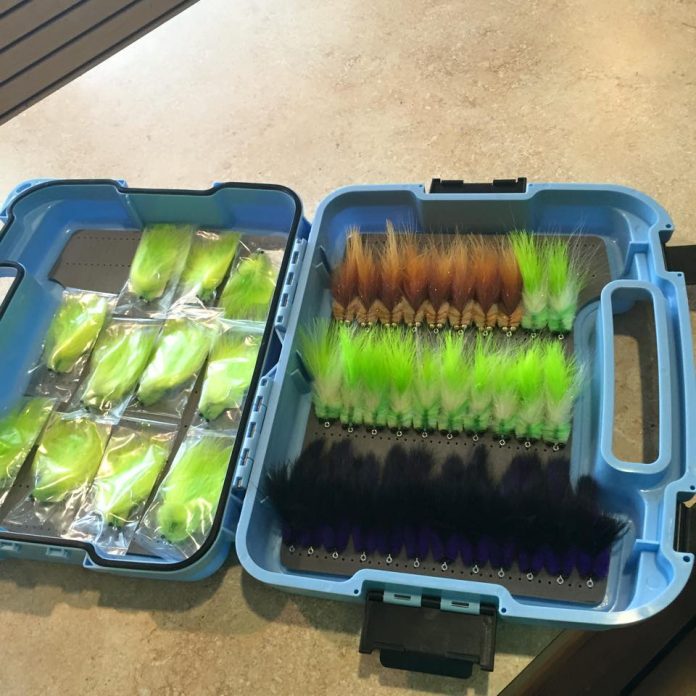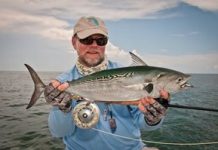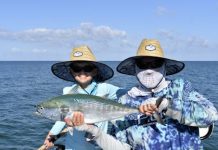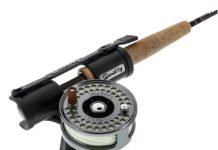
A Series by Capt. Jon Bull
In this installment of the series, Learning to Fly, we will be looking at how to choose the right fly reel, backing, and fly line.
Now that you have demo-cast and purchased your fly rod, it’s time to think about your reel and the lines that go on it. Choosing the right fly reel is commonly considered to be the least difficult part of getting outfitted for fly-fishing. Some anglers consider the reel to be nothing more than a spool that holds your line. When tackling freshwater trout or bass, that mentality can hold true. But when pursuing the saltwater species found in Florida, a little more thought has to go into your decision making process.
The first thing to consider is the material the reel is made of. Remember, you are using this reel in SALTWATER! Saltwater destroys everything it touches. Aluminum reels are the top choice when gearing up for the salt. It is a lightweight material that holds up to the rigors of saltwater exposure. Many reels are machined, which means it is designed to use less aluminum in the reel. This makes the reel even lighter. The next factor to consider is spool size. Most saltwater fly reels employ a spool size called a “large arbor.” The spool is wider which means more backing can fit on the reel and you retrieve more line in one turn of the reel. Both are beneficial when fighting fish that run a great distance like bonefish, large tarpon, and permit. That brings us to the final factor, the drag system of your reel. Most fly reels employ a cork drag, sealed drag or synthetic drag system. Both have their advantages and disadvantages. Cork drags require more maintenance than synthetic drag systems, but do not get as heated when a fish is really running on the drag. Sealed drags generally require little maintenance. When tackling the above-mentioned species, your drag system may become the most important factor when choosing a reel. Fly reels can get very expensive. Tibor, Hatch, Ross, Orvis, Abel, and Nautilus are some of the premier names in the industry. There are some less expensive companies out there, but as with anything, you get what you pay for. Get the best reel you can afford.
Choosing what kind of backing is rather simple. Backing is a braided line that is tied directly to the spool. Most fly lines are only 80-110 feet in length, so more running line is a must. There are two kinds of backing; Dacron backing and gel spun backing. Both come in various sizes based on pound test. Gel spun backing is the latest rage in the industry because it lays flat on the spool, unlike Dacron. This allows you to put much more backing on your reel. Doing this could come in real handy if you ever wanted to tackle bonefish or big redfish on a 6 weight fly rod. You’ll need the extra backing.
Fly lines can be very, very technical. Sink ratios, grain weights, and various tapers can really confuse many beginning fly fishers, however, can be very essential bits of information, as you gain a little more experience. Your line choice should be as easy as possible. If you have an 8-weight rod, you get an 8-weight line. If you are fishing bigger flies or you want to make quick casts by loading the rod quicker, over-lining your rod with one size bigger fly line will help. The other factor to decide on is the kind of line; floating, intermediate sinking, or sinking line. For most inshore saltwater applications, weight forward, floating fly line is the standard. For situations where deeper water is being fished, a fly line with a clear sink (or ghost) tip or intermediate ghost tip can be used. Some fly line companies make a completely clear fly line. Your local fly shop will be able to help you decide on this critical part of your fly fishing outfit. Scientific Anglers, Orvis, Monic, Rio, Royal Wulff, Airflo, and Cortland are companies to consider. Again, get the best fly line you can afford.

In our next installment of the series, Learning to Fly, we will cover the how-to’s on building fly tippets and some of the little tools and toys that make your day of fly fishing a little easier.
Capt. Jon Bull can be contacted via email at jbull1229@gmail.com, 863-860-7250, and on the many online forums under the handle “Shadowcast.”
- Learning to Fly 4 - February 5, 2016
- Learning to Fly 5 - July 24, 2013
- Learning to Fly 3 - July 24, 2013











